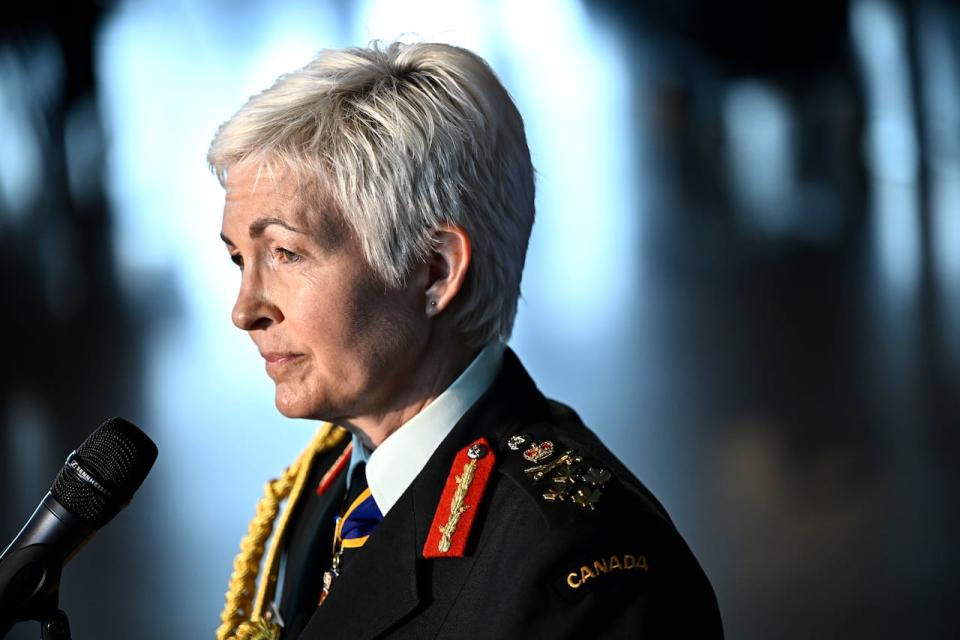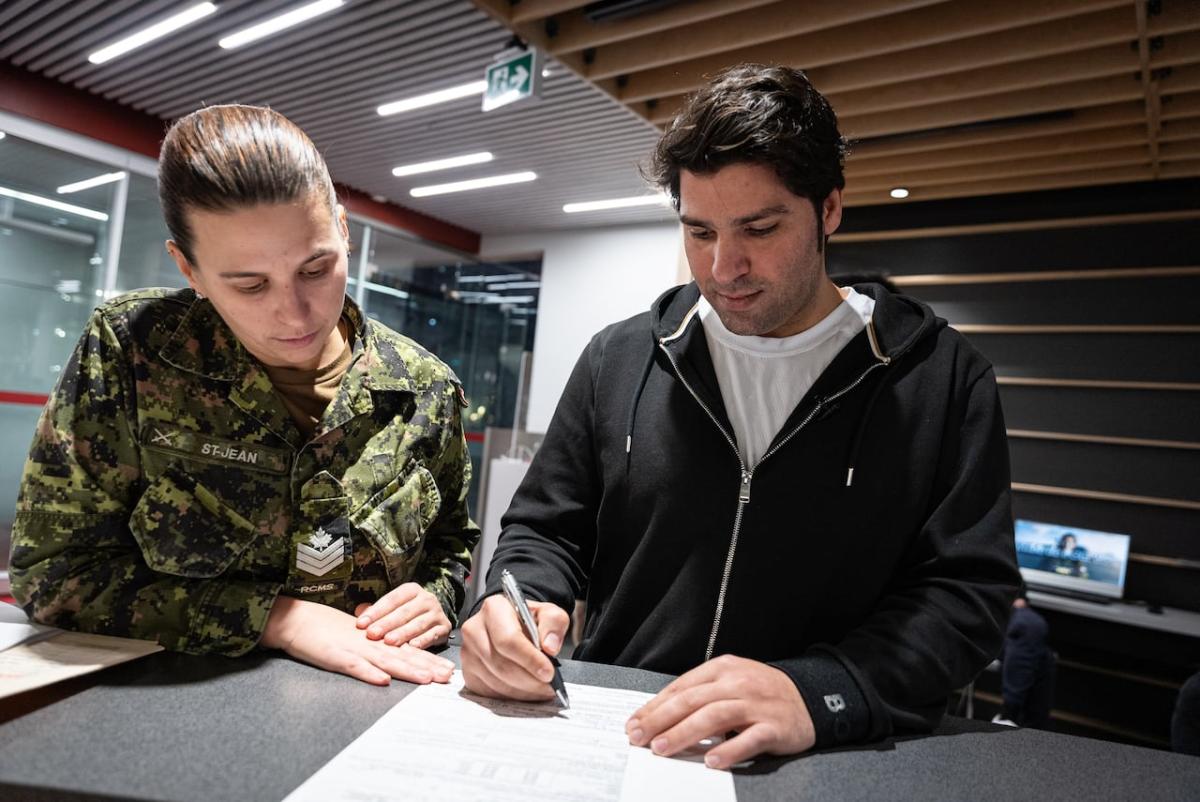The Canadian military has just as much of a problem with training as it does with recruiting, a House of Commons committee was told Thursday.
In her first appearance before the defence committee, Gen. Jennie Carignan, the newly-appointed chief of the defence staff, testified that the Armed Forces only has the capacity to put 6,400 recruits through basic training each year.
“We are exploring ways of expanding our basic military qualification, as well as the rest of the qualification in terms of the various trades that we need to train people post-basic military training,” said Carignan, who took over as top military commander in July.
“We are in the middle of working this [training expansion] plan currently, but the strategic intake of 6,400 is what we are aiming for, at least for this year.”

Gen. Jennie Carignan, chief of the defence staff, participates in a media availability after a change of command ceremony at the Canadian War Museum in Ottawa on Thursday, July 18, 2024. (Justin Tang/The Canadian Press)
As geopolitical tensions rise around the world, the military’s inability over the past few years to meet its recruiting targets has gotten a lot of attention.
The former top military commander, now-retired general Wayne Eyre, once told the same committee that the personnel shortage had reached 16,500 members in both the regular and reserve forces.
Defence Minister Bill Blair was referring to the recruiting crisis last spring when he spoke of a “death spiral” for the Canadian Armed Forces.
Early this year, however, Eyre said that things had started to turn around and that last winter, the military had started to recruit more people than it was losing through attrition.
On Thursday, Carignan painted a slightly better picture than Eyre did. She told the four-party committee that as of the end of August, the military had a total of 92,798 people in uniform out of an authorized strength of 101,500. She cautioned that the numbers change from day to day.
So far this year, the military has recruited 2,400 people and is waiting on responses from an additional 1,000 applicants, Carignan added.
As part of the recently rewritten defence policy, the Department of National Defence (DND) says it expects it will take until the early 2030s to bring the military back up to its full authorized strength — a timeline defence analysts and opposition politicians have said is unacceptable.
Eyre told CBC News last spring that, over and above the current gap, an additional 14,500 members will have to be recruited to operate the new equipment the federal government is purchasing, including F-35 fighters and replacement submarines.
The military received more than 70,000 applications last year but accepted fewer than 5,000 new members. A series of new initiatives to speed up recruiting — including a probationary period that would get candidates enrolled while security checks are carried out — have been introduced.
But the training bottleneck appears to be a major factor limiting how quickly the Armed Forces can grow. The military’s new second-in-command, Lt.-Gen. Stephen Kelsey, appeared before the committee alongside Carignan on Thursday. He said other top commanders have been lobbying for more training resources.


Defence Minister Bill Blair said the military’s training programs have been geared to a lower volume of recruits. (The Canadian Press/Adrian Wyld)
Asked about the training bottleneck on Thursday, Blair acknowledged it but cut the defence department some slack. He said the instruction system has been structured to accommodate the lower volume of recruits.
“We need to increase our capacity to train,” the minister said. “The [instruction] capability that does exist, frankly, matches what they have been able to onboard in the Canadian Armed Forces over the last four years. But those numbers need to increase very significantly.”
Blair said the government fully recognizes the problem and is prepared to address it.
“We know that our training capacity is potentially one of those limitations” on returning the military to full strength, Blair told reporters following the ceremony to inaugurate the new Canadian Forces Cyber Command. “And so we are quite prepared to invest in increasing our training capacity.”
New recruits go through a series of training hurdles, beginning with basic instruction, a nine-week introductory course to the military. That is followed by more specialized training in whatever occupation or trade the recruit has chosen.

